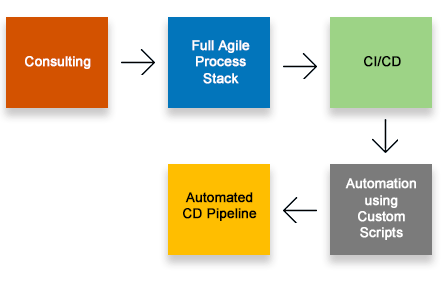
Wealth Management Advisory Product Software Firm with offices across the United States of America and Canada, delivering software products to more than 3800 Customers. The Software is a fully integrated platform providing wealth management advisors with planning capabilities, proactive guidance alerts, and a variety of practice management tools aimed at helping advisors scale their practice, increase client satisfaction, and most importantly, grow their business.

 WATI while providing solutions for their technical challenges and issues with Connectivity and Network Performance, DB Scalability and Performance, On-premise to Cloud Connectivity; understood the need of an Agile Model combined with DevOps implementation to manage the future needs of the customer.
WATI while providing solutions for their technical challenges and issues with Connectivity and Network Performance, DB Scalability and Performance, On-premise to Cloud Connectivity; understood the need of an Agile Model combined with DevOps implementation to manage the future needs of the customer.






